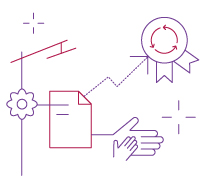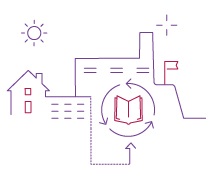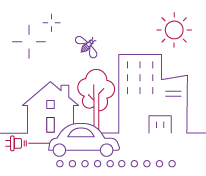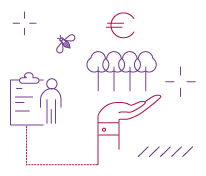
Sustainable development: we talk a lot about it, but do we really do anything about it?
This concept, popularized in the 1990s following the release of the Brundland Report for the UN, has infiltrated the world of business and local authorities, becoming the foundation of what is today known as social responsibility and extra-financial reporting. It also fully echoes the SDGs, the Sustainable Development Goals formalized by the UN in 2015, a major program of cross-cutting actions embodied, in previous decades, by Agendas 21 (1992) and the Millennium Goals (2000).
Literally, sustainable development is development that meets the needs of the present without compromising the ability of future generations to meet their own needs. It involves a holistic approach, divided into three pillars: an economic pillar, a social pillar and an environmental pillar. As you can see, there are many concepts that fit into this vast envelope, such as the circular economy, biodiversity, social finance, smart cities, and so on.
How do you go about it without forgetting anything? For the sustainable development or CSR manager in you, the AFNOR group has a range of tools to support you, so that you can build a solid sustainable development policy, monitor it over time, increase your skills, and have your commitments recognized with the right distinctive signs.
In our dossier, discover the tools and best practices for deploying an effective sustainable development policy.

1- Building a sustainable development policy in line with ISO 26000
1-1 Décliner sa démarche DD en 7 piliers avec l’ISO 26000
ISO 26000, with its 7-pillar approach, is the ideal tool for framing your sustainable development policy without leaving anything out.
1-2 Viser les ODD et construire son reporting DD
The ISO 26000 standard enables you to align your sustainable development approach with the Sustainable Development Goals, and to build up your extra-financial reporting.
1-3 Autoévaluer et labelliser sa démarche ISO 26000
An SD approach based on ISO 26000 aims for continuous improvement. Self-assess and be recognized with the Engagé RSE label and Diag RSE online.
1-4 Décliner l’ISO 26000 à son secteur et son activité
Use the universal ISO 26000 matrix as a starting point to tailor your sustainable development approach to your sector and obtain a customized label.

2 - Structuring a circular economy project
L’économie circulaire est un concept reposant sur l’idée d’en finir avec l’économie linéaire et son triptyque produire-consommer-jeter…

3 - Promoting responsible investment and green finance
3-1 Définir le vocabulaire de l’ISR et de la finance verte
Together with professionals, AFNOR is developing standards to better understand the concepts of green, climate, solidarity, sustainable and responsible finance.
3-2 Se faire labelliser comme gestionnaire de fonds
AFNOR Certification offers the Greenfin and SRI labels to show that your funds support the ecological transition or are socially responsible.
3-3 Faire reconnaître ses fonds verts avec le label Greenfin
AFNOR Certification offers the Greenfin label, formerly known as TEEC, to indicate that your funds are financing ecological transition activities.

4 - Working for sustainable cities, biodiversity and ecological transition
4-1 Outiller sa collectivité pour devenir une smart city
Sustainable development also applies to local communities. Voluntary ISO standards provide a framework for the smart city concept.
4-2 Montrer son engagement en faveur de la biodiversité
To preserve biodiversity, we need a common vocabulary and an objective label to highlight our commitment: AFAQ Biodiversité.
4-3 Lier efficacité énergétique et solutions bas-carbone
Every SD approach has an energy component. Voluntary standards and certifications exist to support your energy management system.
